Discussion Bacterial infections of the nails are caused by Gramnegative bacteria, usually P aeruginosa, but can also be caused by Klebsiella spp and Grampositive bacteria like Staphylococcus aureus 1, 2 P aeruginosa is the most common pathogen causing bacterial nail infections, although it is rarely reported 3 P aeruginosa is a Gramnegative, aerobic, The main cause of fingernail infection is due to bacteria It enters into the skin that surrounds the nail when the nail is damaged due to biting or dishwashing or due to any other injury Fungus can also enter the nail causing paronychia and Nail infection (paronychia) Paronychia is an infection of the skin of the fingers or toes, at the place where the skin folds down to meet the nail Acute, or sudden onset, paronychia is caused by the staphylococcus bacteria The organism can gain entry if the nail is cracked, broken, bitten, or trimmed too closely

What Are The Common Causes Of Pus In The Finger
Bacterial infection under fingernail
Bacterial infection under fingernail-Common causes of a finger infection are bacteria that may enter the body through an open cut, or second or thirddegree burns to a finger Viral infections of the fingertip are referred to in medical terms as herpetic whitlow Cellulitis may also cause infection of the finger, although the underlying tissue is generally not affectedBackground Paronychia is defined as infection afflicting the eponychial nail folds of the hand or foot Such infections are rarely reported in the perinatal age group, and not previously described in a neonate younger than 2 weeks Trauma resulting in inoculation of the nail fold is the most common predisposing factor to paronychia
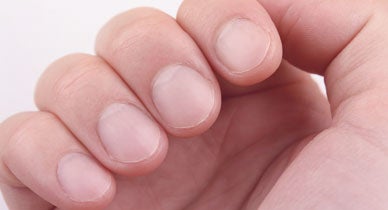



Paronychia Causes Symptoms And Diagnosis
Two germs found under many of the workers nails were Klebsiella, a bacteria that can cause pneumonia and urinary tract infections, and Candida parapsilosis, a yeast that can cause wound and bloodBacterial infection of the nail The Staphylococcus aureus bacterium is a common cause of bacterial infection of the nail Typically, the infection first takes hold in the fold of skin at the base of the nail (proximal nail fold) Without treatment, the infection can worsen, leading to inflammation and pus Microbial contamination of the under nails has become a global health problem Thus a total of under nails swabs from under the nails, in left and right hands of students were collected All students (100%) found to harbour bacteria on their under nails Bacterial pathogens isolated from the under nails of students
The common types of infection are Bacterial is the most common cause of paronychia Bacterial paronychia usually causes an abscess around the nail, redness, and pain The bacteria can enter the nail through a cut in the skin or from a dirty manicure tool The types of bacteria that cause this infection are Main symptom is a painful, red, swollen area around the nail, often at the cuticle or at the site of a hangnail or other injury There may be pusfilled blisters, especially with a bacterial infection Bacteria cause the condition to come on suddenly If all or part of the infection is due to a fungus, it tends to occur more slowlyMany nail problems can look like a fungal infection – for example the changes seen in psoriasis, after a bacterial infection or an old injury – however, antifungal tablets will not help them The right treatment may depend on knowing which fungus is causing the trouble;
An infection of the skin around the nail is called a paronychia These can be due to bacteria or due to fungus Often, after a bacterial infection has caused the body's defenses to be disrupted, the normal fungus on our skin invades the tissues Simple treatment may cure the bacterial infection, but the fungal infection persists, as it is much Paronychia happens when the skin around the nail gets irritated or injured Germs get into the skin and cause an infection These germs can be bacteria or a fungus Often, the skin is injured because of biting, chewing, or picking at the nailsParonychia The offending bacteria are usually staphylococcal and streptococcal organisms Rarely, a fungus causes this Felon This bacterial infection of the finger pad, caused by the same organisms that cause paronychia, is usually the Herpetic whitlow The




Paronychia Information Mount Sinai New York
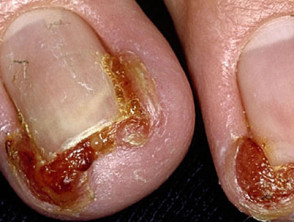



Paronychia Dermnet Nz
What Causes a Finger Infection?Bacterial infections under nail enhancements are the result of moisture trapped between the natural nail and the nail enhancements F Performing a hand a nail in analysis on a client is only important on the first visit to the salonAcute paronychia is usually due to bacterial infection with Staphylococcus aureus (which may be multiresistant), Streptococcus pyogenes, Pseudomonas, or other bacterial pathogens It can also be due to the cold sore virus, Herpes simplex, and the yeast, Candida albican s The cause or causes of chronic paronychia are not fully understood




Pseudomonas Bacterial Nail Infection Stock Image C037 4757 Science Photo Library




Nail Bed Infection Treatment Healing Time Symptoms Pictures
Paronychia is a skin infection that develops around the nail It occurs when bacteria or fungi get under the skin Paronychia can result from biting or chewing the nails, but it is more common when Bacterial infections account for almost all green discolorations on the surface of the nail plate (under the enhancement) That they are mold and mildew is a myth, and fingernail fungal infections are also pretty rare The vast majority of green bacterial infections are caused by improper preparation and/or application Paronychia concerns a bacterial infection of the skin (cuticle or lateral fingernail fold) surrounding the fingernail or toenail – often caused by an ingrown nail Along with gradual thickening browning discoloration of the nail plate, pus is usually present under the skin
/GettyImages-1158551410-beafd5e19cc24832be470c3245dd3c2e.jpg)



Skin Infection Around Fingernails And Toenails
/onycholysis-onychomycosis-011e734b850f4e898cd876492844bfb5.jpg)



Causes Of A Loose Toenail Or Fingernail
Paronychia Paronychia is an infection of a hangnail on the finger The tissues on the edges of the finger near the nail root provide the perfect place for bacteria to enter ItNail Infection Bacterial Or Fungal ?The infection is actually under the nail, in the subungual region These are called onychomycosis, or chronic fungal infection These infections treated initially with local antibiotic ointments The affected nail may be treated every day for up to 6 months with this topical ointment




Infected Hangnail Causes Treatment And More




Paronychia Wikipedia
Paronychia, commonly known as bacterial nail infection, is inflammation of the region of the finger or toe from which the nail plate originates, which is called the proximal nail fold (PNF) This inflammation may occur in the short term (acute) or may be a longterm problem or one that keeps coming back (chronic) This infection is usually superficial and localized to the soft tissue and skin around the fingernail This is the most common bacterial infection seen in Paronychia is an infection of the skin around your fingernails and toenails Bacteria or a type of yeast called Candida typically cause this infection Bacteria and
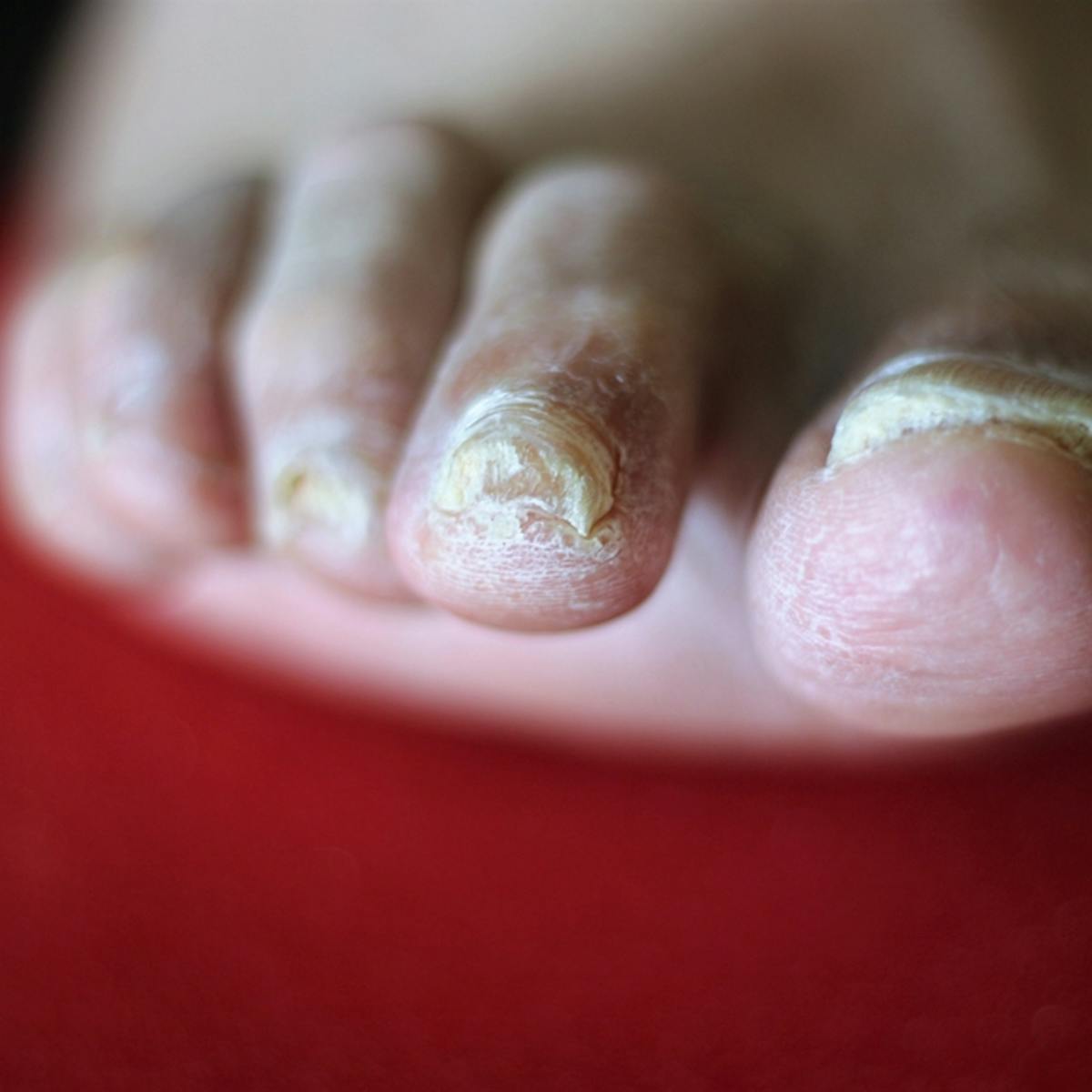



Explainer Why Do We Get Fungal Nail Infections And How Can We Treat Them
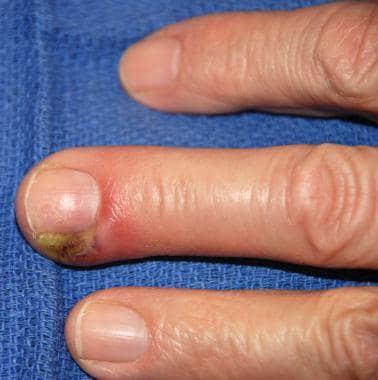



Paronychia Practice Essentials Background Epidemiology
Introduction Pseudomonas aeruginosa is the most prevalent pathogen of bacterial nail infections Green nail syndrome (GNS) is characterized by greenish chromonychia caused by pyocyanin, a metabolite produced by P aeruginosaGNS is usually restricted to one or two nails 2, 3Predisposing factors are onychomycoses, nail diseases, working in wet conditions, diabetesFor mild nail infection or while waiting to see a doctor Soak the affected foot or hand 3 to 4 times daily for minutes inantiseptic solution of warm water and chlorhexadine or povidoneiodineAlmost all nail infections can be categorised in 2 major types Paronychia Most common culprits are bacterias and / or Candida (yeast) Fungal Nail Infection (Onychomycosis) Most common culprits are fungi like Dermatophytes and / or Candida (yeast)




Paronychia Causes Symptoms And Diagnosis
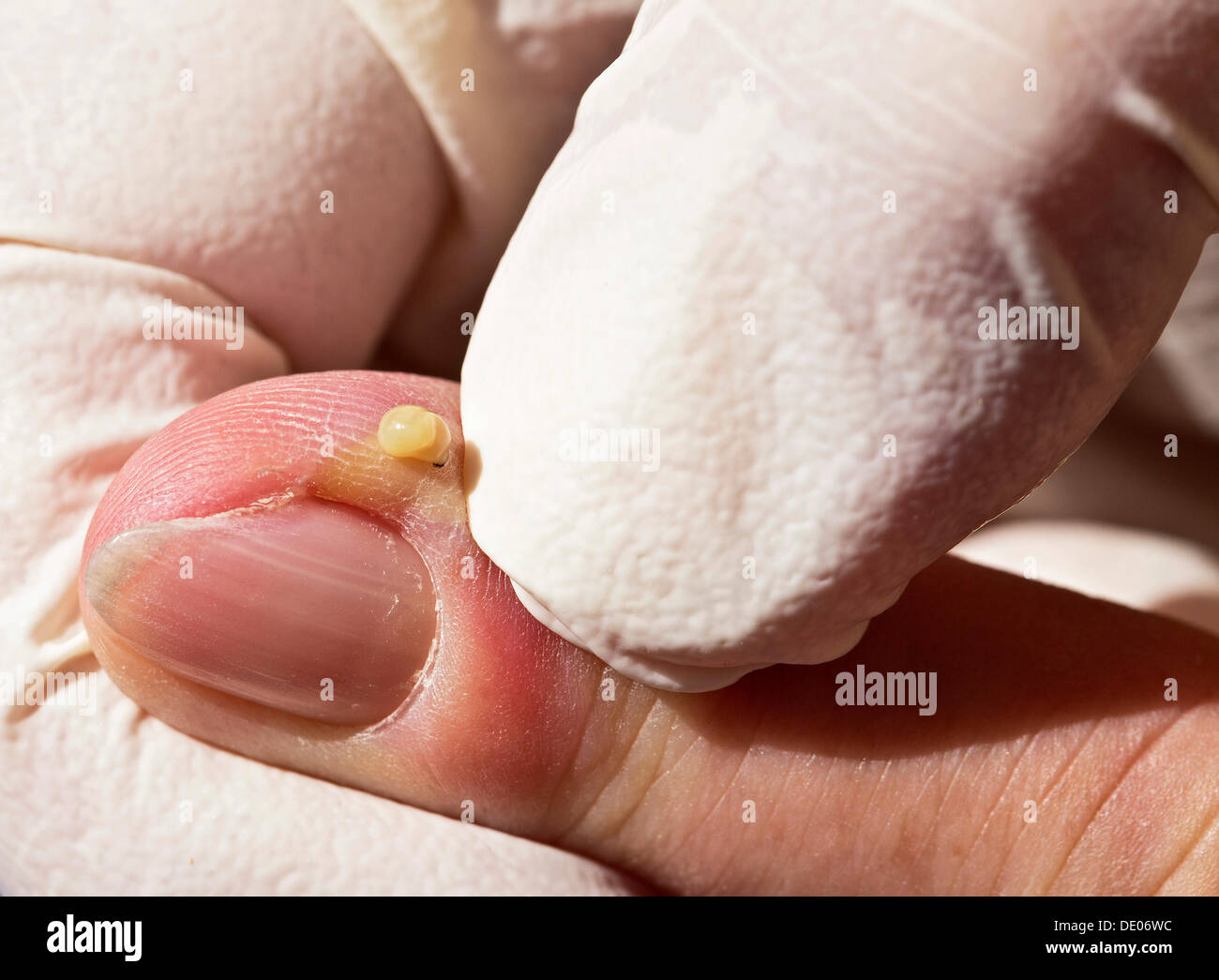



Nail Infection High Resolution Stock Photography And Images Alamy
It can take several weeks to get culture resultsSometimes these bacterial nail infections causes green discoloration of the nails (chloronychia), like when the bacteria Pseudomonas aeruginosa is involved Pictures of Toenail Infection Some of the pictures below are of infections of the fingernails However, similar infections occur on the toenails and therefore it appears largely the same Soaking Fingernails in Antibacterial Solution For minor nail infections, soaking the fingernails in a dish that has been filled with warm water and antibacterial solution for at least 15 minutes four times a day helps in relieving the pus under the fingernail naturally Apple Cider Vinegar Apple Cider vinegar is another great home remedy for treating infections
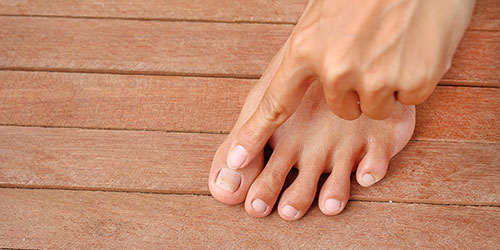



Paronychia Treating And Avoiding Annoying Nail Infections



Paronychia By Dr David Nelson
Signs and symptoms of a fungal nail infection A fungal nail infection may not cause any obvious symptoms at first As it progresses, the infection can cause discolouration of the nail – it may turn white, black, yellow or green thickening and distortion of the nail – it may become an unusual shape or texture and be difficult to trimInfection can develop in the gap that forms between the two nails, especially if the artificial nail is reglued before a thorough cleaning Fungal nail infection This can occur when moisture collects under acrylic nails It is more common with nails that are left on for 3 months or longerThe separation between the toenail and the nail bed Toenail fungus can also cause bad odor Highly contagious spread through floors, towels, shoes, and clothes Often found with Athlete's Foot Professional help may be required Bacterial Infection of Foot People get infected by bacteria through the site where the skin is injured
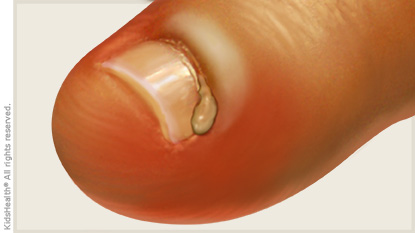



Paronychia For Parents Nemours Kidshealth
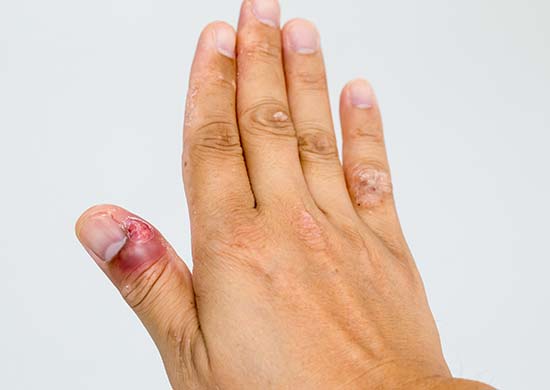



Toenail Infection Fingernail Infection Raising Children Network
Fungus of the nails if quite common It often starts as a white spot under the nail that is an annoyance more than anything else However, as the infection grows and penetrates, you will see it turn colors, become thicker, and crumble What started as a fungus affecting one nail can quickly spread to other toe or fingernails too It can happen but a green bacterial infection beneath the natural nail plate is rare Tea Tree oil and Sixtus Forte are both good things to use as has been suggested If she has been prescribed Lamasil or Lodasil for a fungal infection then this will do the trickParonychia (pahruhNIKeeuh) is an infection of the skin around a fingernail or toenail The infected area can become swollen, red, and painful, and a pusfilled blister ( abscess) may form Most of the time, paronychia is not serious and can be treated at home In rare cases, the infection can spread to the rest of the finger or toe and lead




Help Is This A Fungal Or Bacterial Infection I Have A Job Interview Tomorrow And Want To Know If I Can Paint Over These Monstrosities As I M So Embarrassed I Could Cry



1
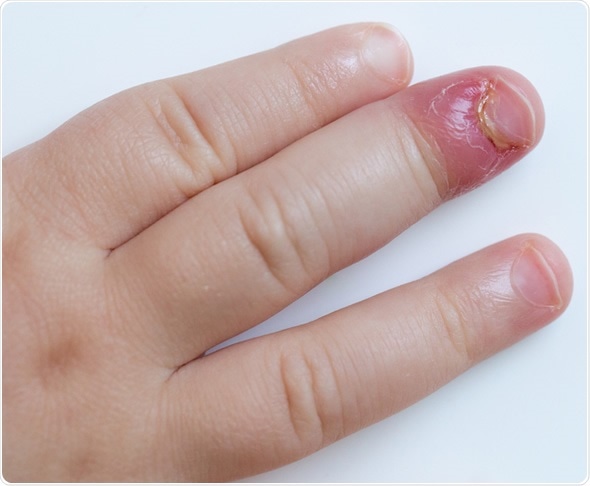



Paronychia Types And Causes
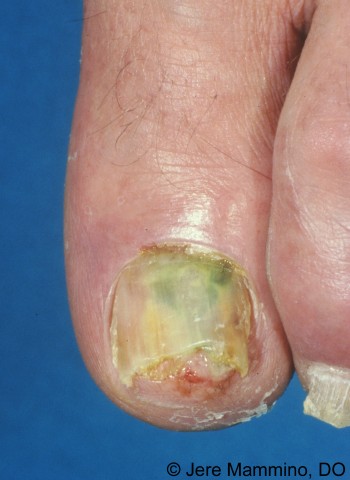



Green Nail Syndrome American Osteopathic College Of Dermatology Aocd
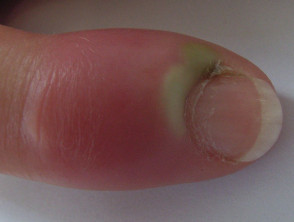



Paronychia Dermnet Nz




Stomach Churning Video Shows Woman Having Fungal Bacteria Removed From Toes After Ignoring Infection




Pointing The Finger Paronychia In The Emergency Department St Emlyn S




Kill 99 9 Bacteria Nail Care Treatment Nail Fungus Oil Onychomycosis Paronychia Anti Fungal Nail Infection Repair Treatment 5ml Nail Treatments Aliexpress
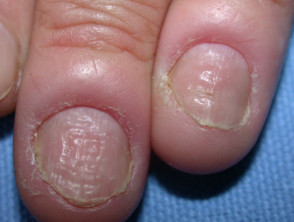



Paronychia Dermnet Nz
/GettyImages-11585515251-b7f776ee60fd4cc192dfdc790a70e75d.jpg)



Paronychia Symptoms Causes Diagnosis And Treatment
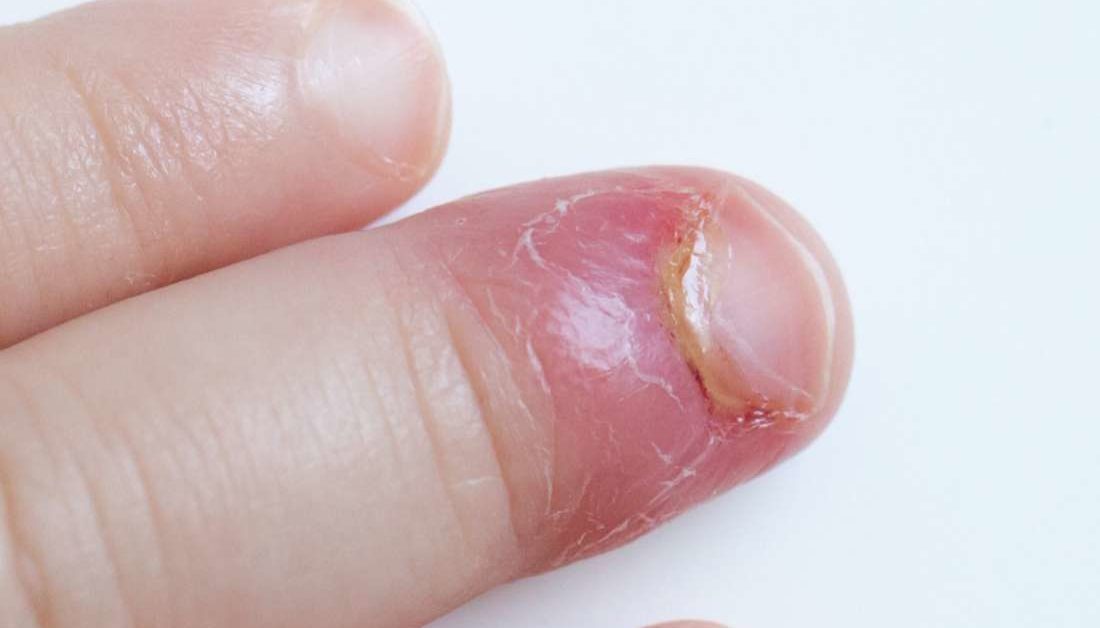



Paronychia Causes And Treatment Of An Infected Nail
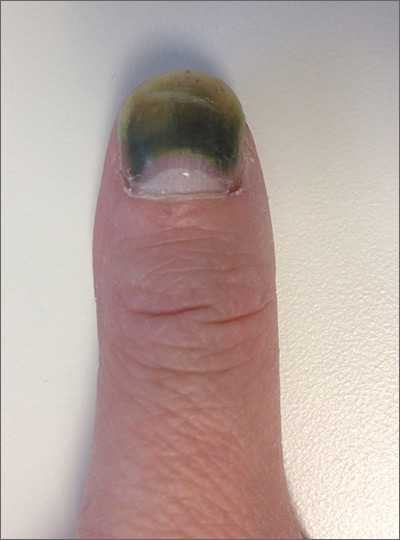



Green Thumbnail Mdedge Family Medicine
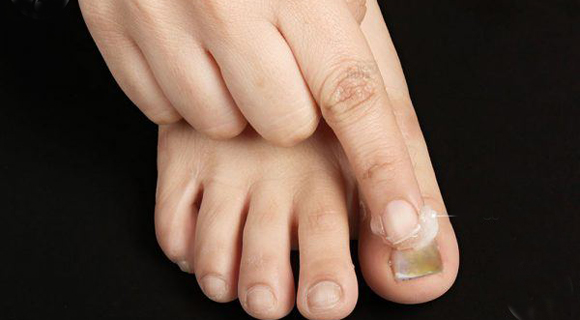



Causes And Home Remedies For Nail Fungus Among Most Common Infections




Green Nail Syndrome Gns Pseudomonas Nail Infection Chloronychia Green Striped Nails Chromonychia Dermatology Advisor
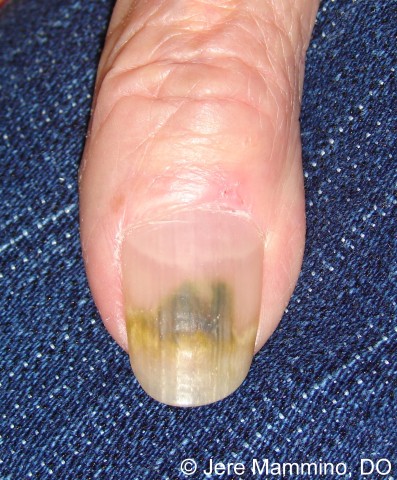



Green Nail Syndrome American Osteopathic College Of Dermatology Aocd
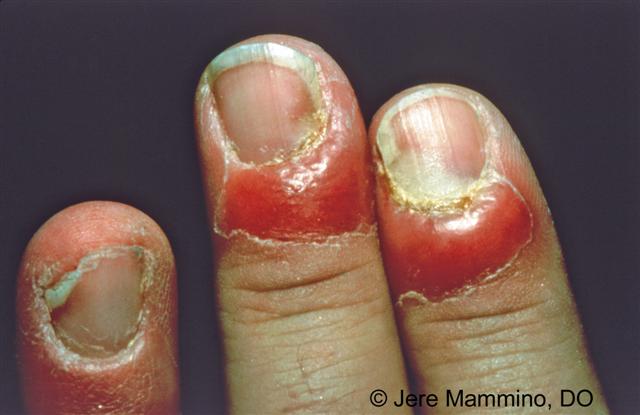



Paronychia Nail Infection American Osteopathic College Of Dermatology Aocd




Tenn Woman Says She Got Serious Bacterial Infection From Nail Salon Costing Her Hundreds Wztv




What Are The Common Causes Of Pus In The Finger




Girl S Nail Biting Infection Nearly Leads To Fingertip Amputation Health Com
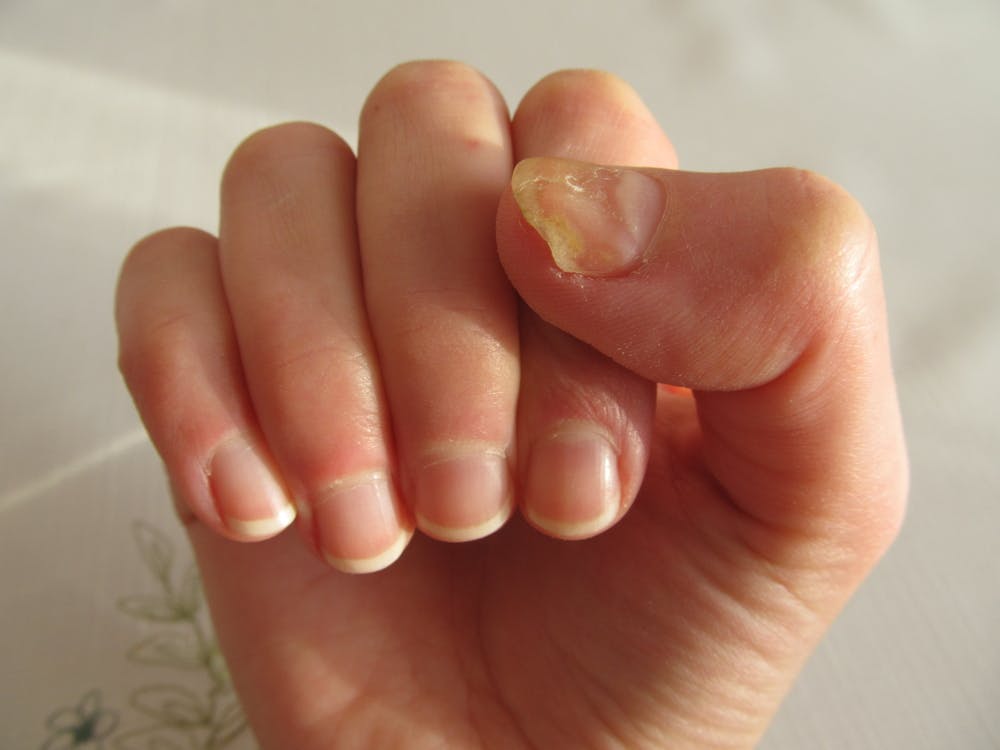



Explainer Why Do We Get Fungal Nail Infections And How Can We Treat Them
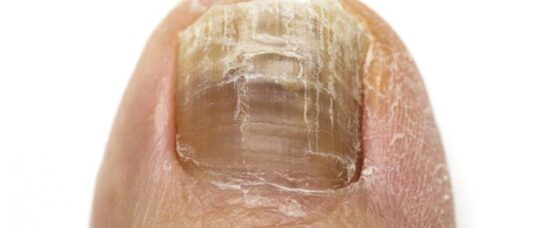



My Nail Is Infected I Need Antibiotics Nursing In Practice




Paronychia Causes And Treatment Of An Infected Nail



1




Paronychia Causes Symptoms And Diagnosis
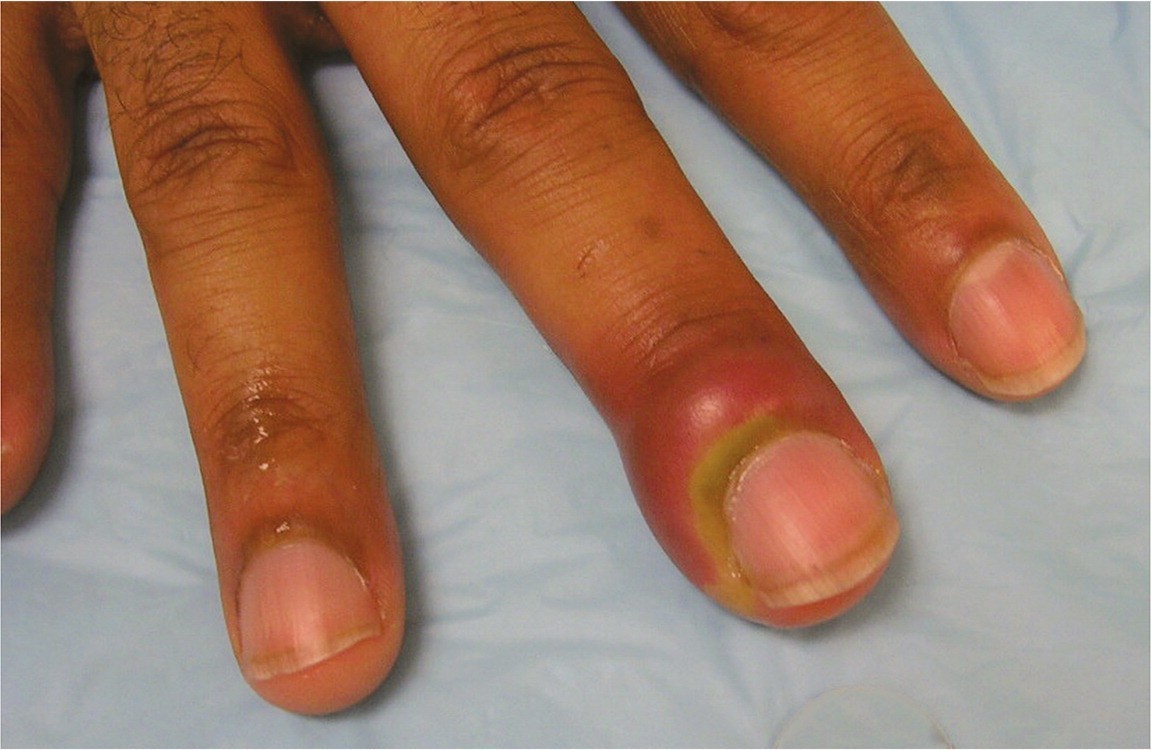



Common Diseases Of The Nail Venkat Center For Skin Plastic Surgery




Nailbed And Finger Infections Bone Talks
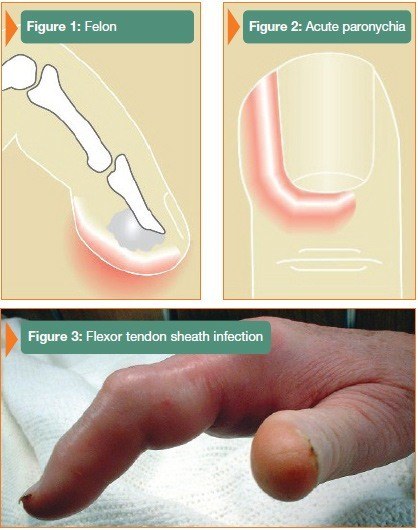



Hand Infections Brooklyn New York The New York Hand Wrist Center




Toenail Infection Healthdirect
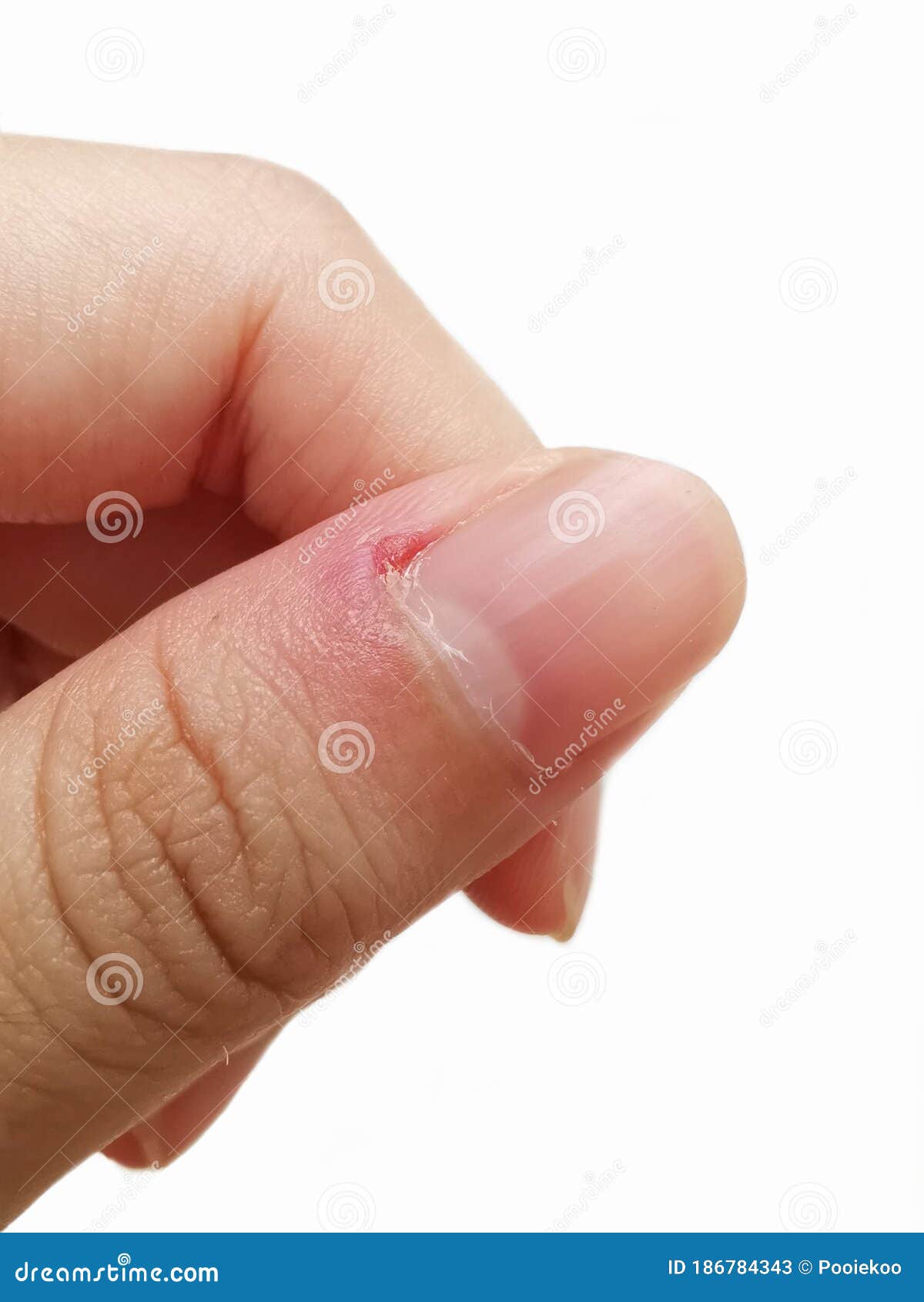



Infected Hangnail Due To Bacterial Infection From Ingrown Nail On Thumb With White Background Stock Image Image Of Pain Ingrown




Do You Have Toenail Fungus Or A Bacterial Infection
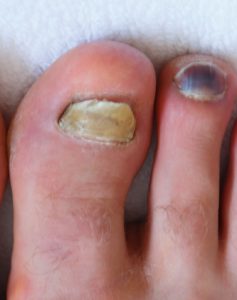



Pseudomonas Nail Infection Causes Symptoms Best Treatment
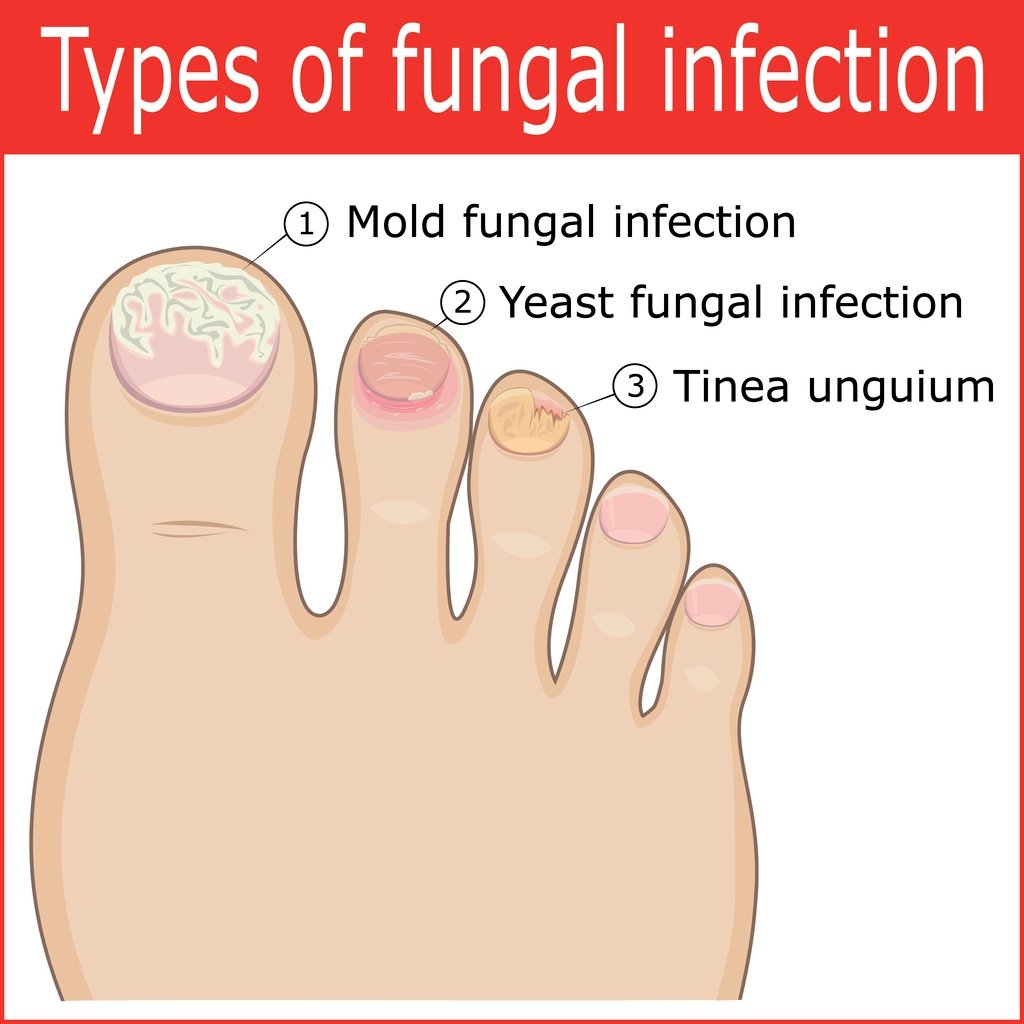



Cure Toenail Pain From Fungus Infection
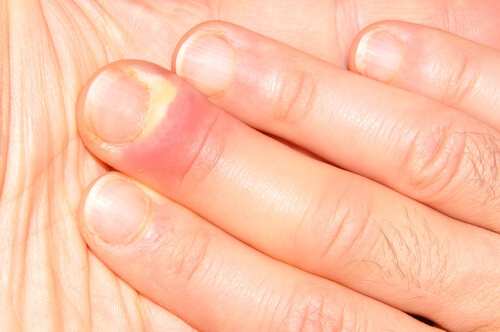



14 Signs Your Nails Are Infected With Paronychia
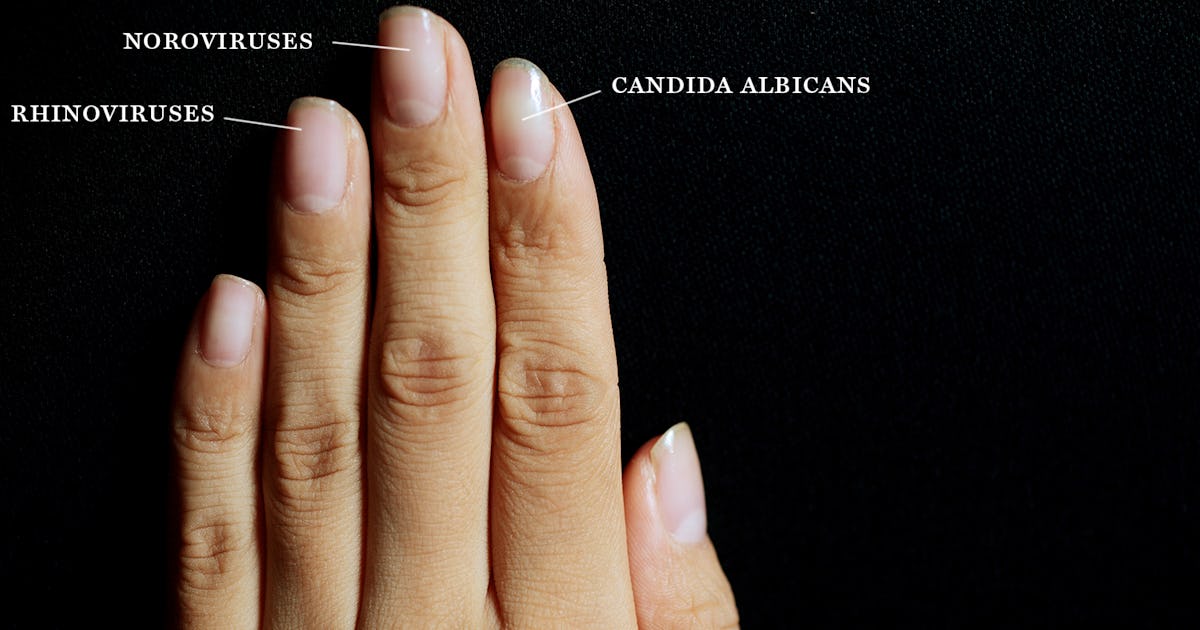



Here S All The Disgusting Stuff That Grows Under Your Nails When You Don T Wash Your Hands




10ml Nail Fungus Treatment Cream Onychomycosis Paronychia Anti Fungal Nail Infection Kills 99 9 Bacteria And Fungus Nail Treatments Aliexpress
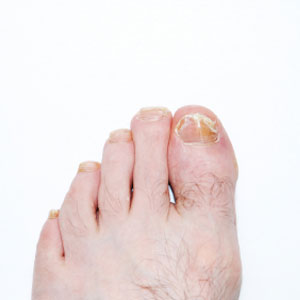



How To Treat A Nail Infection Howstuffworks




Paronychia Swollen Finger With Fingernail Bed Inflammation Due To Bacterial Infection On A Toddlers Hand Stock Photo Download Image Now Istock




Acute And Chronic Paronychia American Family Physician




Get Rid Of Toenail Fungus Best Medical Remedies And Cures
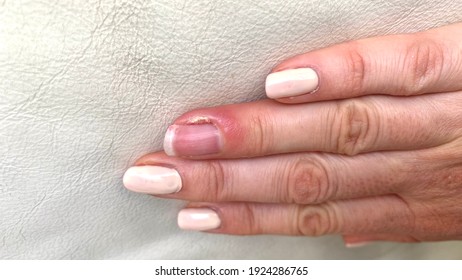



Paronychia High Res Stock Images Shutterstock
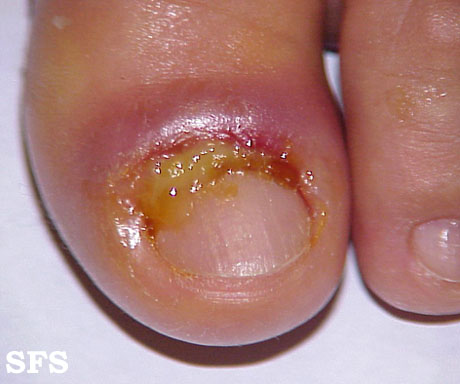



Paronychia Wikidoc




An Atlas Of Nail Disorders Part 1 Consultant360
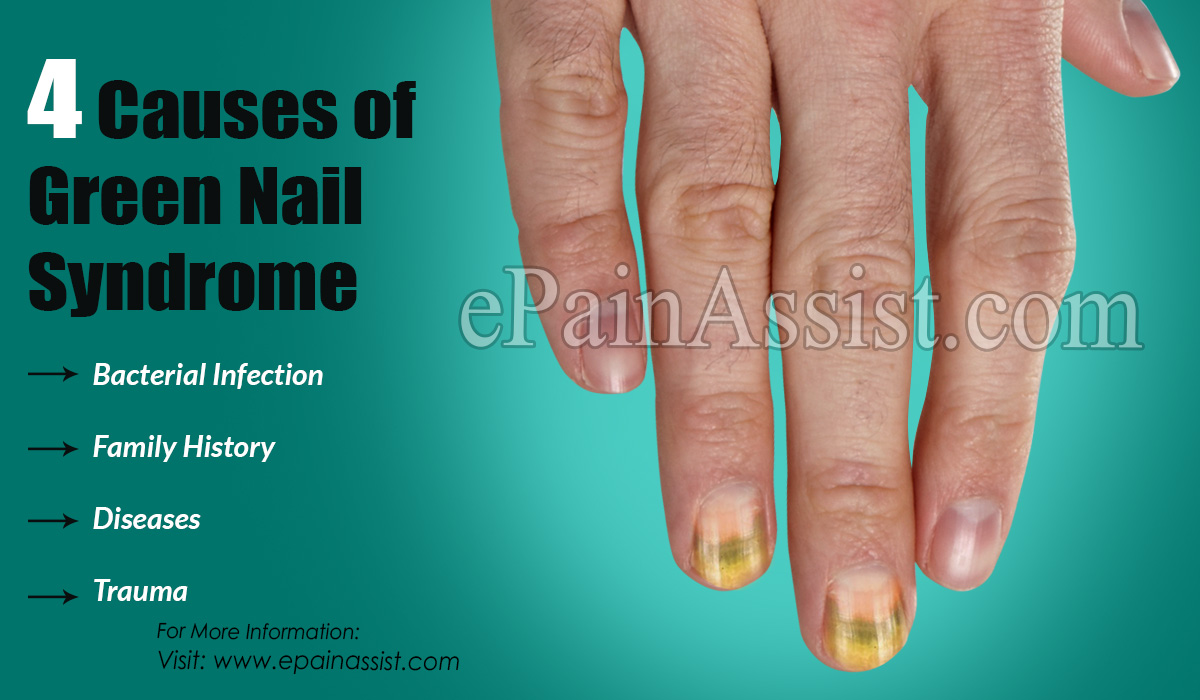



4 Causes Of Green Nail Syndrome It S Diagnosis Home Remedies




Emergency Medicine News
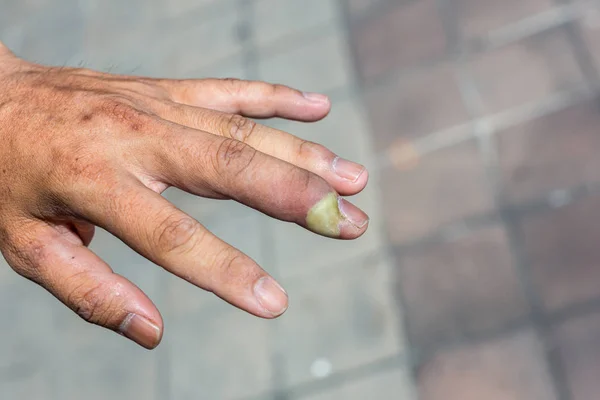



Paronychia Swollen Finger With Fingernail Bed Inflammation Due To Bacterial Infection On A Toddlers Hand Finger Swollen With Inflammation Due To Nail Ripped Infection Tender Ugly Stock Photo
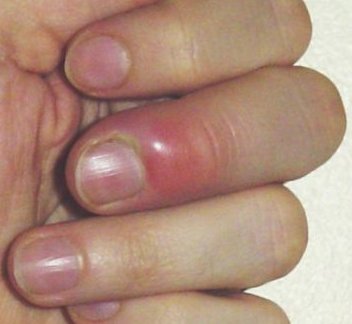



How To Treat And Prevent Fingernail Infection West Oaks Urgent Care Center Blog
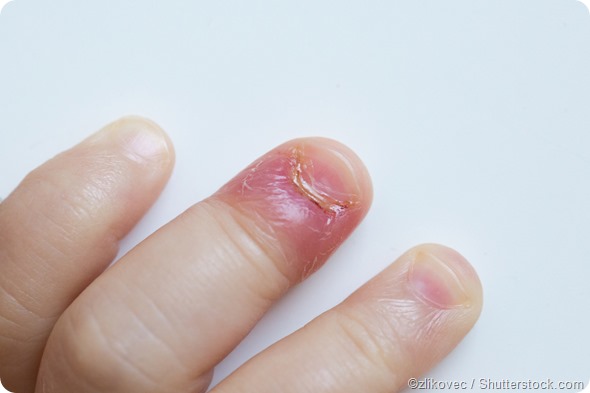



What Are Nail Fold Infections Paronychia




How To Drain A Finger Paronychia Medmastery
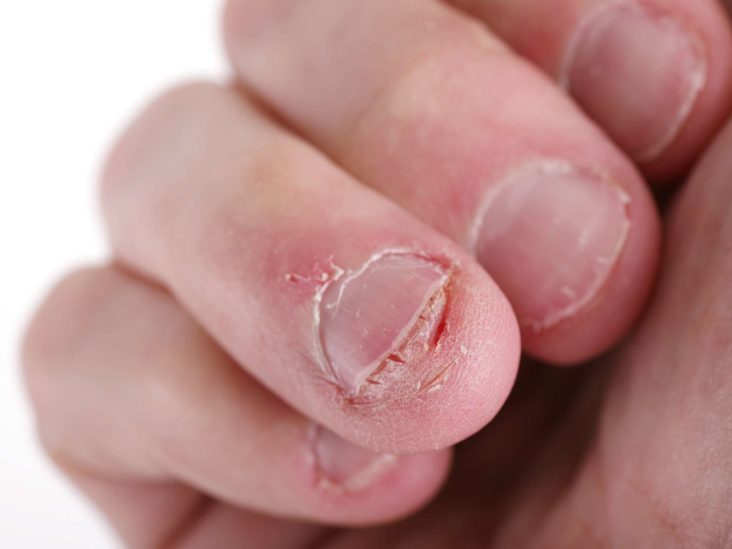



Paronychia Causes And Treatment Of An Infected Nail




Paronychia Youtube




Home Remedies For Pus Under Fingernail
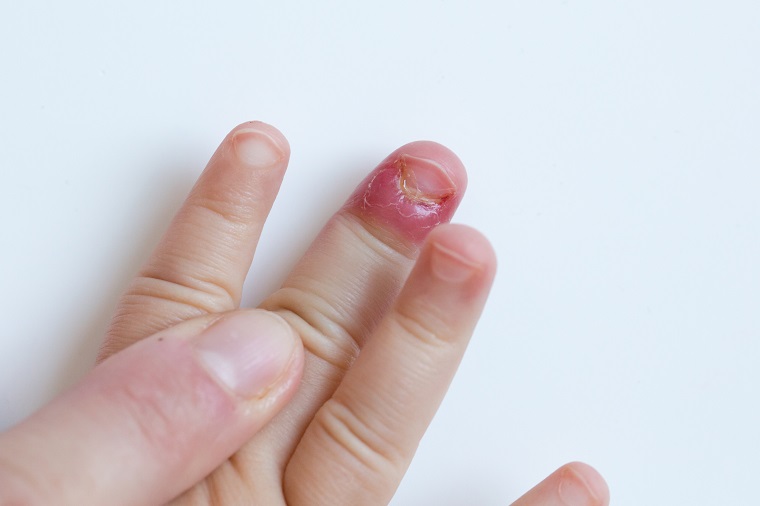



Hand Infections Dr Jonathan Lee Yi Liang



1




What Does It Mean If Your Client Has Greenies Pure Nails




Paronychia Photos Stock Photos Pictures Royalty Free Images Istock
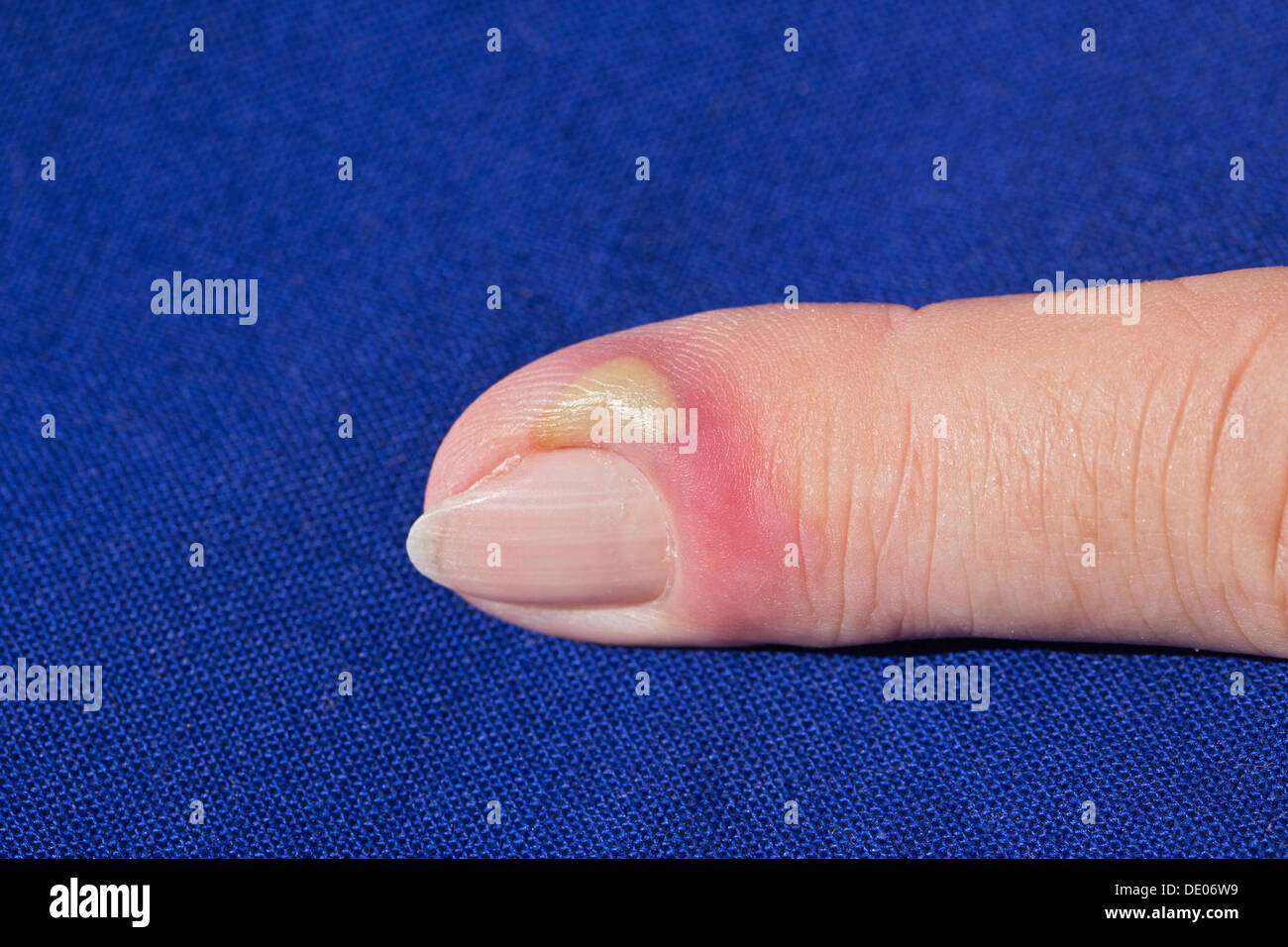



Bacterial Infection Inflammation Index Finger Pus Abscess Stock Photo Alamy
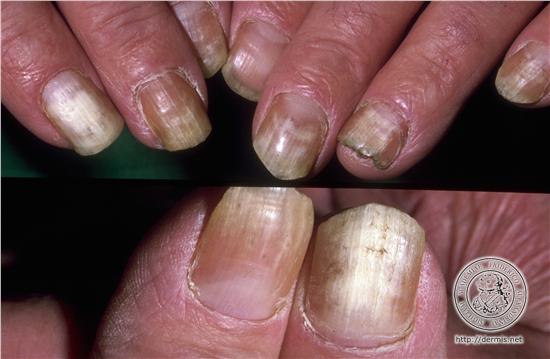



Fungal Nail Infections
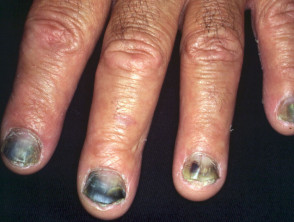



Fungal Nail Infections Dermnet Nz
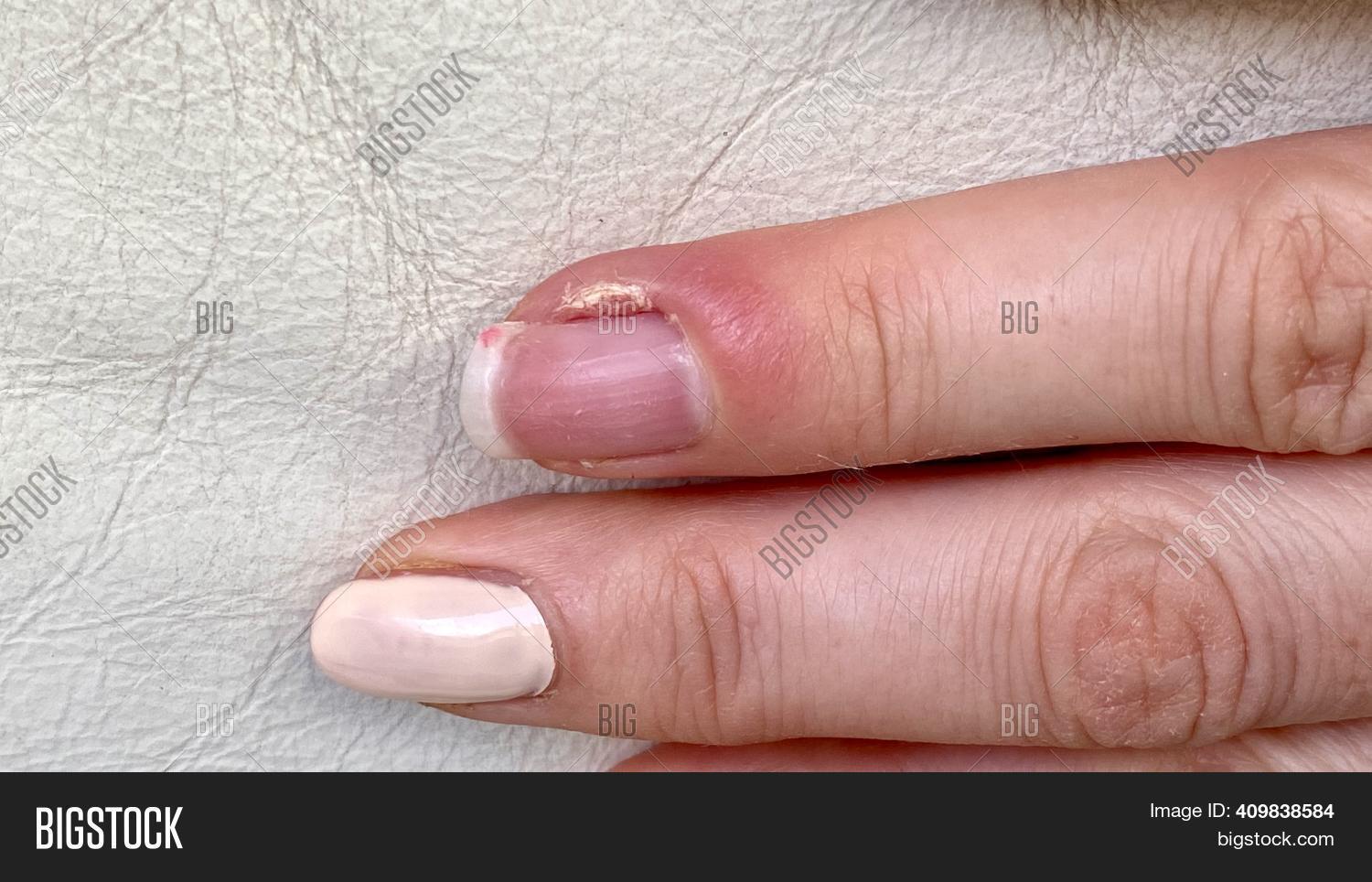



Paronychia Swollen Image Photo Free Trial Bigstock
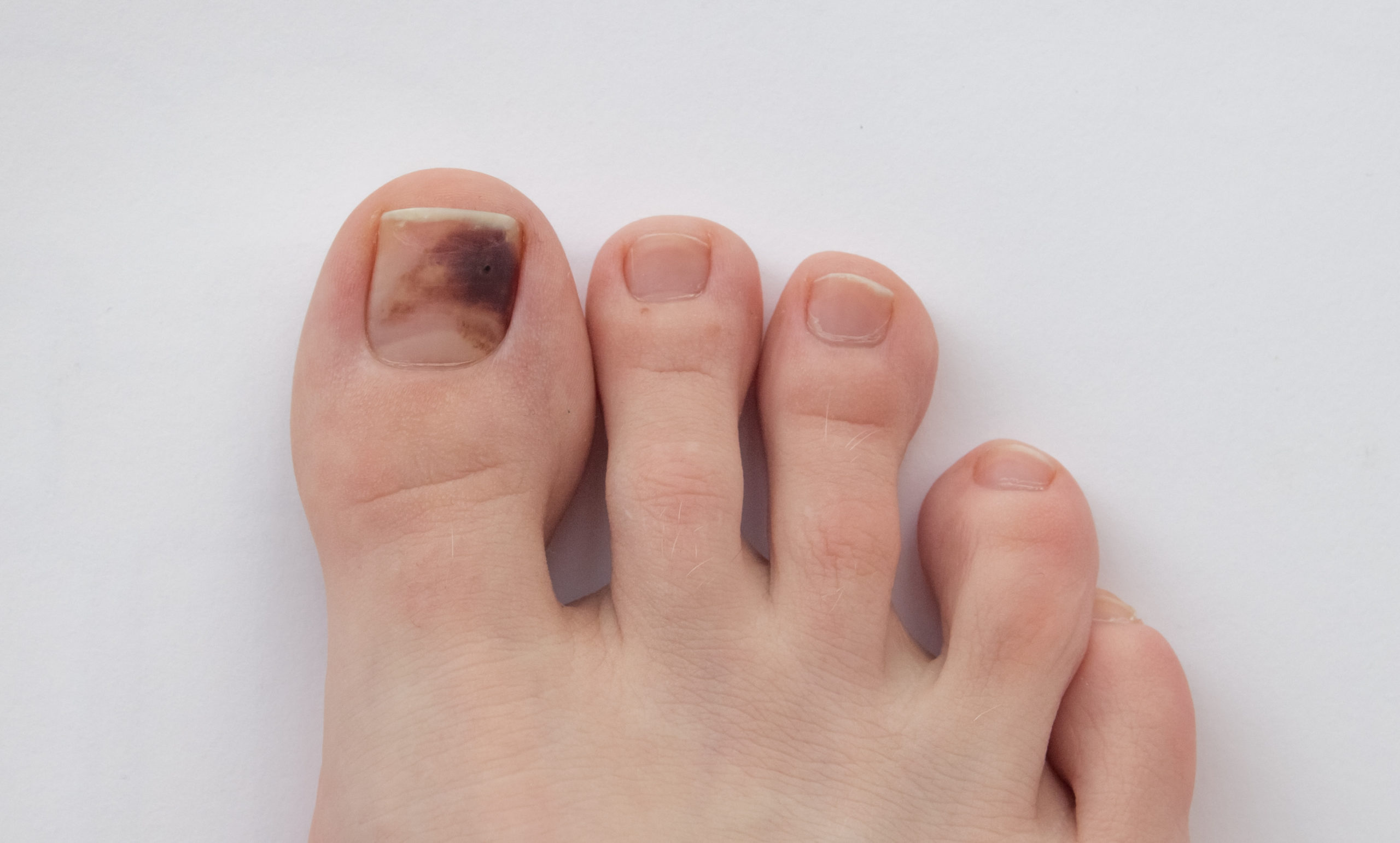



What S Causing The Black Spot Beneath My Nail My Footdr




Dip Powder Manicure Nail Infection




Paronychia Information Mount Sinai New York
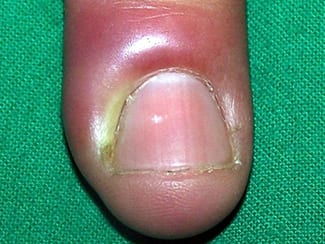



Nails Doctor V
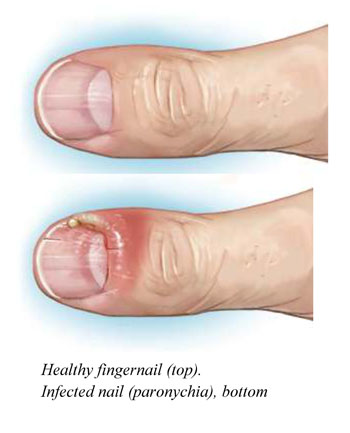



Nail Infection Paroynchia Causes Diagnosis Treatment Prevention




Acute Paronychia Skin Disorders Msd Manual Consumer Version




Acute And Chronic Paronychia American Family Physician
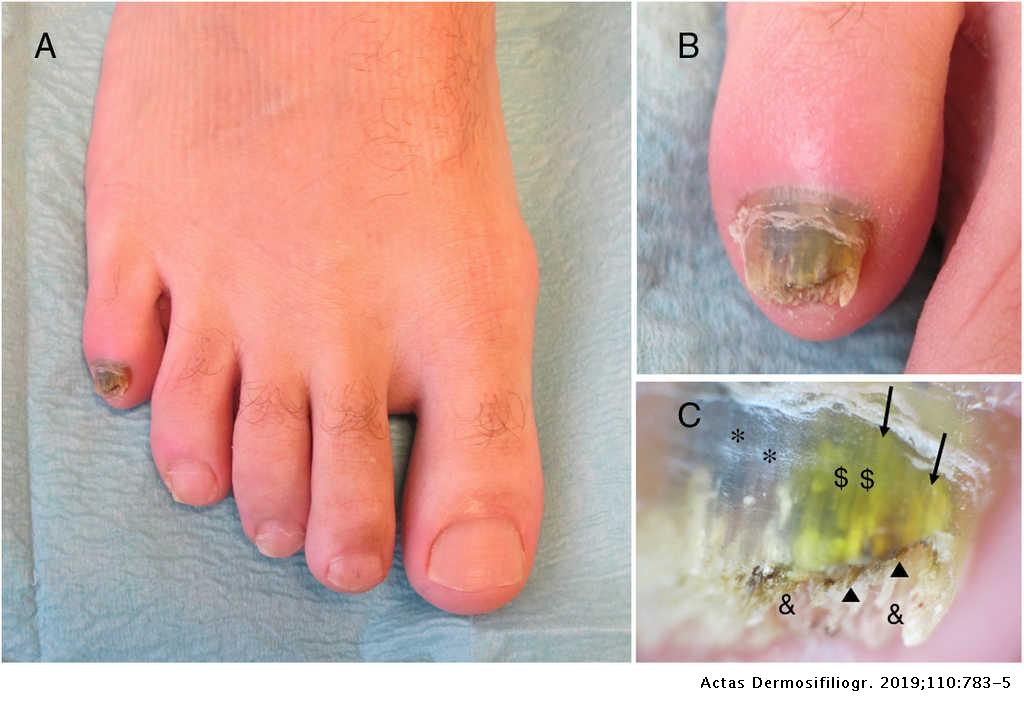



Green Nail Caused By Onychomycosis Coinfected With Pseudomonas Aeruginosa Actas Dermo Sifiliograficas




Fungal Nail Infections Health Navigator Nz
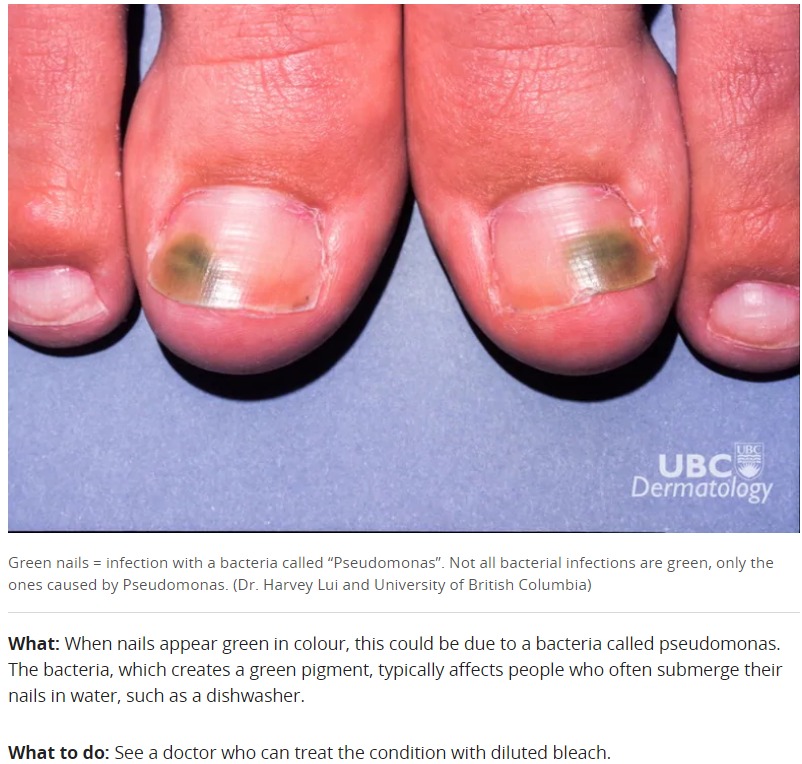



Pseudomonas Toenail Infection Green Nails Infection Grepmed




Bacterial And Fungal Prevention Fungal Nail Treatment Fungal Nail Nail Fungus




Fingernail Bed Inflammation Bacterial Infection Paronychia Swollen Finger With Fingernail Bed Inflammation Due To Canstock



1




Fungus Around Toe Nails Can Kill Bacteria That Cause Life Threatening Infections




Subungual Abscess A Bacterial Infection Of The Nail Bed Journal Of The American Academy Of Dermatology
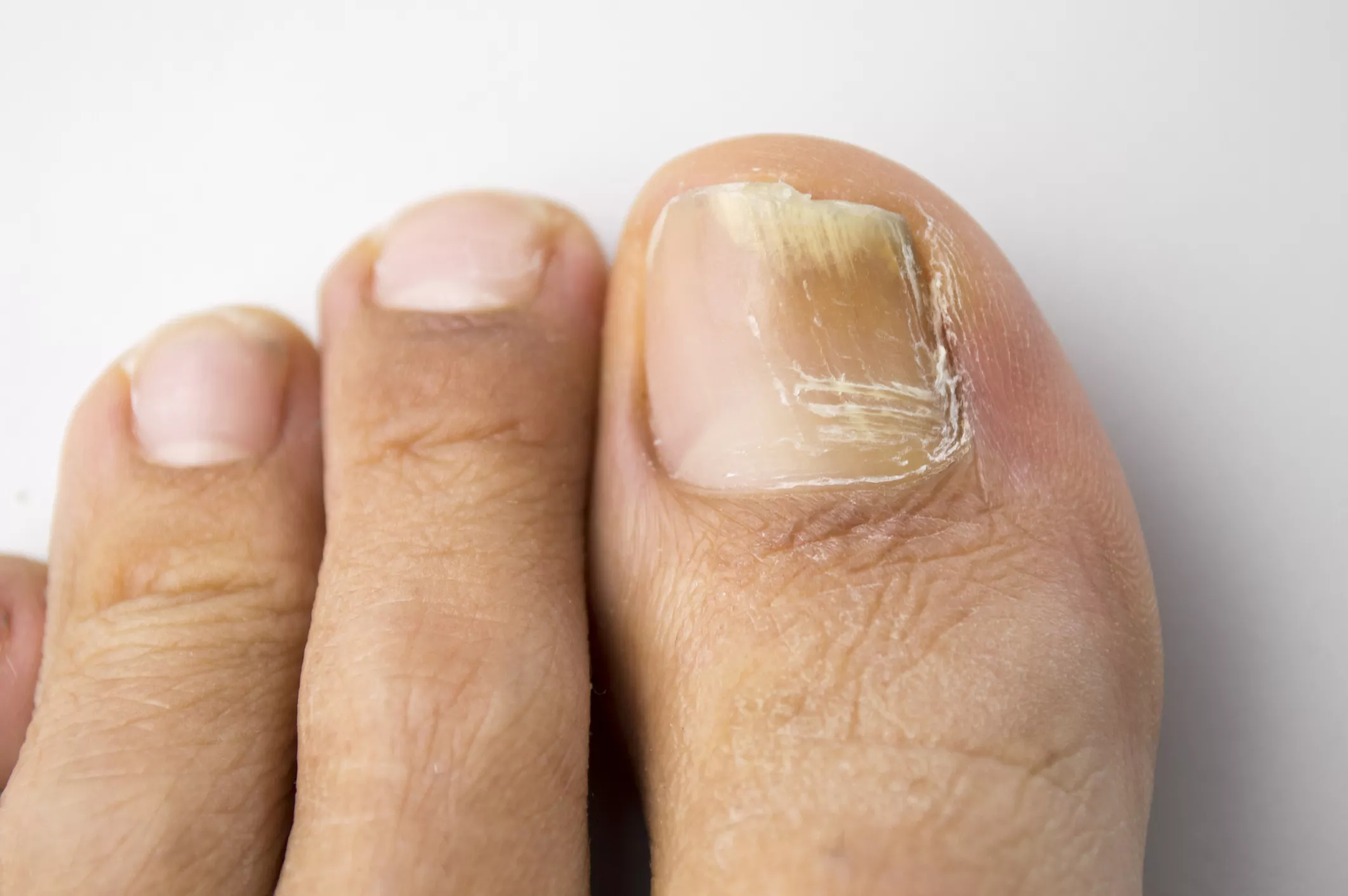



Do I Have Nail Fungus Signs You Have A Nail Infection
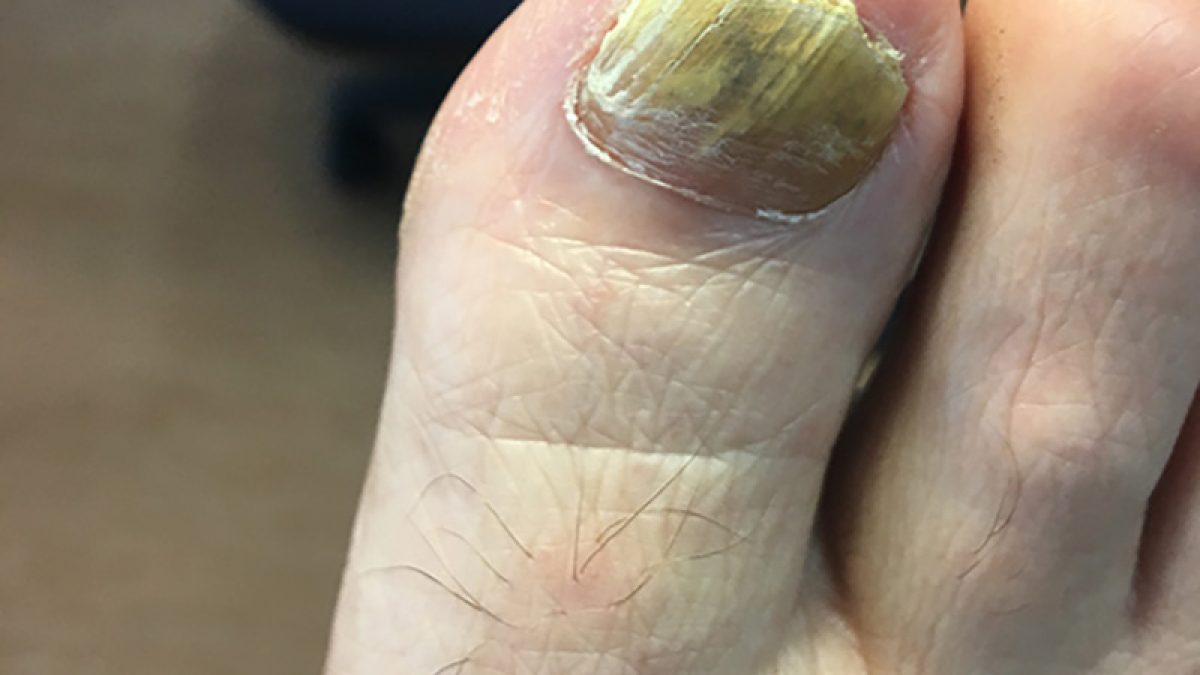



Fungal Nail Infection Causes Symptoms And Treatment
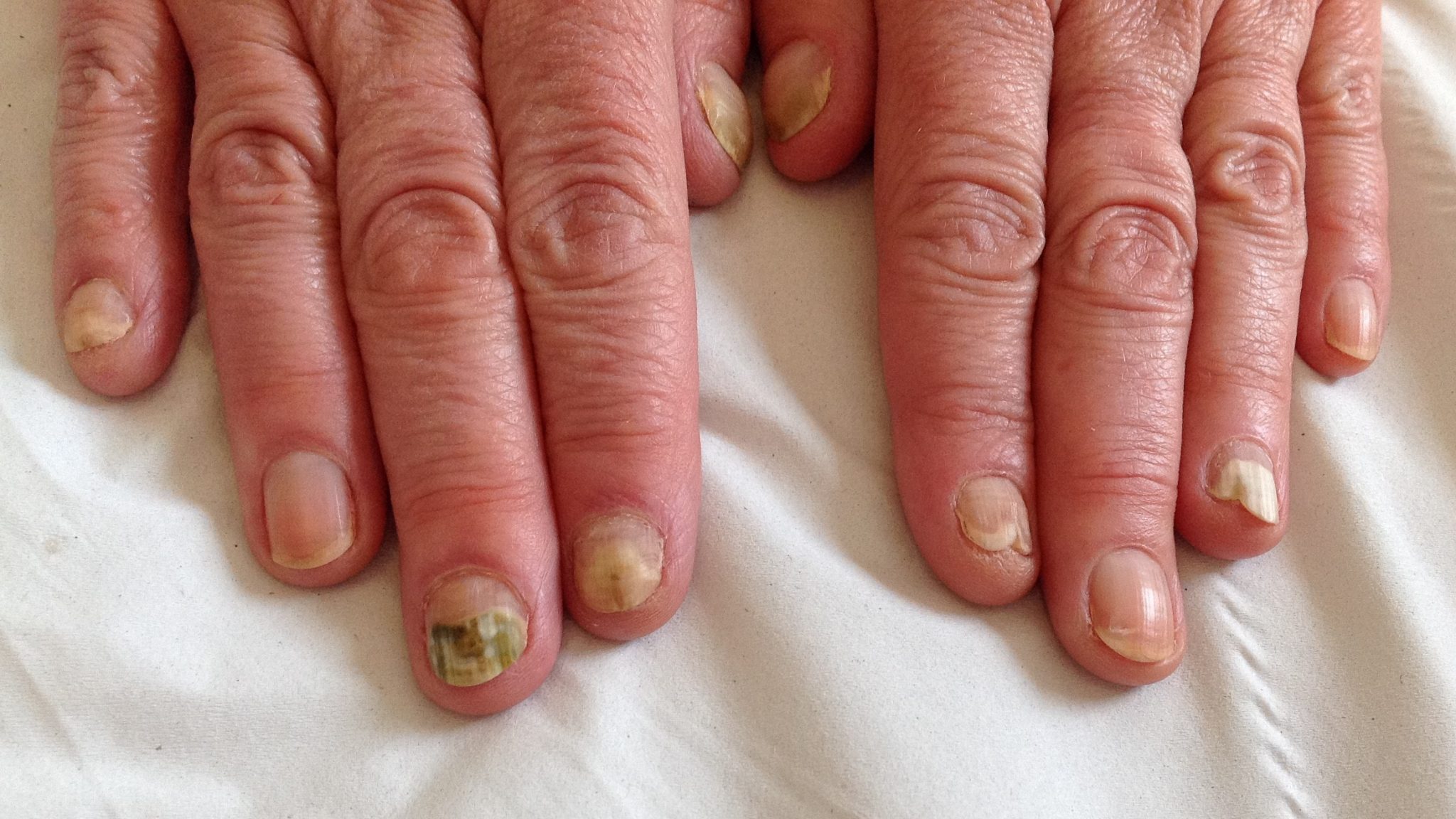



Finger Nail Infections Are They Fungal Candida Or Bacterial Compleet Feet
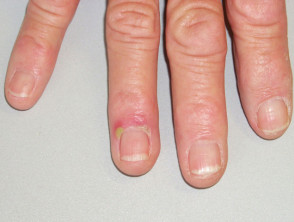



Paronychia Dermnet Nz
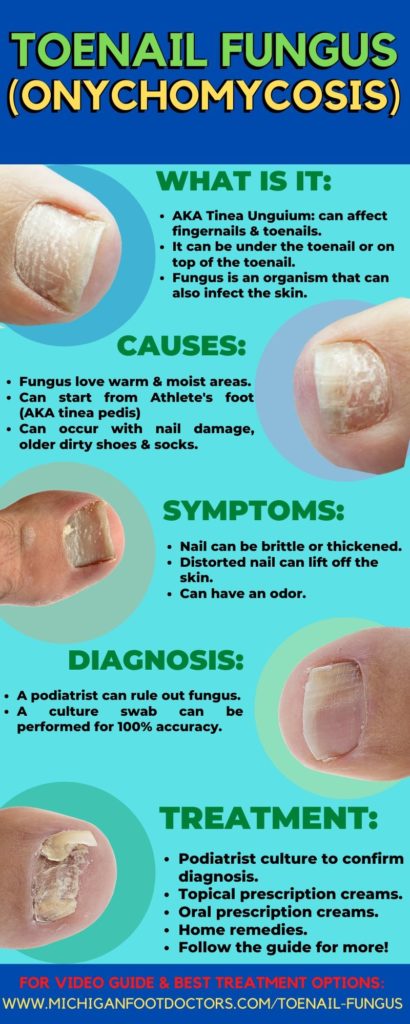



Pseudomonas Nail Infection Causes Symptoms Best Treatment




Pin On Nail Conditions




Paronychia Swollen Finger With Fingernail Bed Inflammation Due To Bacterial Infection On A Toddlers Hand Stock Photo Picture And Royalty Free Image Image




Subungual Abscess A Bacterial Infection Of The Nail Bed Journal Of The American Academy Of Dermatology




Girl S Nail Biting Infection Nearly Leads To Fingertip Amputation Health Com




Bacterial Nail Infection Awesome Nail




Fungal Nail Infection Treatment Causes Medications Picture




Paronychia Causes And Treatment Of An Infected Nail
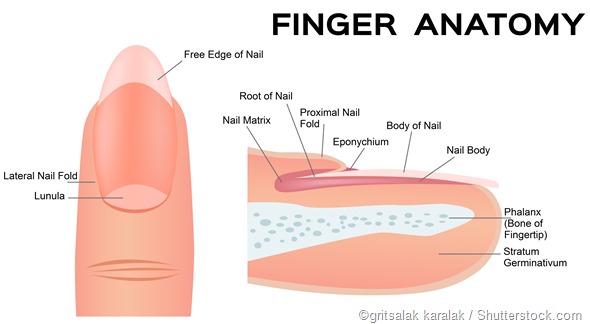



What Are Nail Fold Infections Paronychia




Paronychia Swollen Finger With Fingernail Bed Inflammation Due To Bacterial Infection On A Toddlers Hand Stock Photo Download Image Now Istock



0 件のコメント:
コメントを投稿